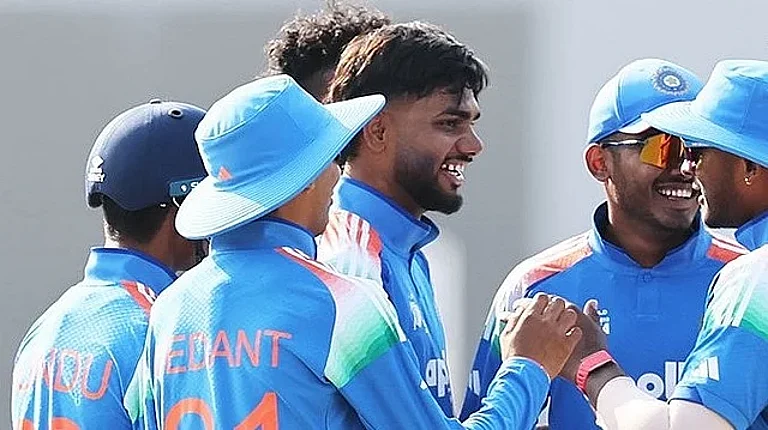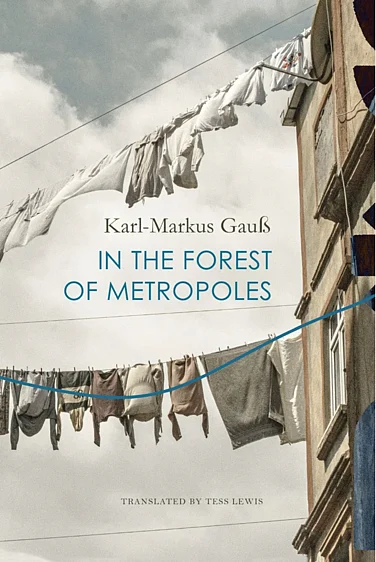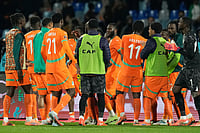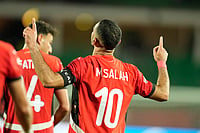It’s not a case of sour grapes, insist the regional writers, shrugging off the large advances, overnight fame, the instant access to international readership and awards now routinely accorded to theIWE as merely the unfair advantage English has over regional languages. "Just like a fair-skinned woman has in our society," as noted Bengali writer Sunil Gangopadhyay puts it. Agrees Kannada writer U.R. Ananthamurthy: "There are any number of top-quality regional writers who don’t get international recognition only because their language is not the global language of America."
But it’s an advantage regional writers now tend to look down upon. "Why should regional writing even aspire to be seen as much as English writing? Why should nimbu pani compete with Coca Cola?" scoffs Marathi writer Dilip Chitre. "Regional writing doesn’t have to consult an English language mirror to know its face."
Fellow Marathi author Balachandran Nimade is equally contemptuous of IWE’s wider reach: "We don’t need international prominence. Just as Shakespeare didn’t seek prominence anywhere but in English, I need prominence in my own language. It doesn’t upset me really that they make so much money out of their writing. They are such necromancers, creating something out of nothing."
There is something suspicious," according to Nimade, "about this business of overnight success. They get so much prominence because of the dominance of journalism in literature. Publicity does not distinguish between good and bad writers, but in their own language people make out the difference between real and fake writers. While any farmer’s son can decide for himself whether a writer in his own language is good or bad, with theIWE he has neither the chance, nor the confidence to make his own judgement."
"The IWE come from a rich circle which has money to buy books," says Punjabi writer Gurdial Singh. "It’s all a commercialised industry: a publisher gets his books reviewed in English magazines and newspapers, then it becomes a status symbol for people who read these journals to buy that book even if it costs Rs 500 or Rs 1,000."
"I am not bothered about greater exposure," agrees M.T. Vasudevan Nair. "As a Malayalam writer I have to simply bother about my small trusted readership and I am content with that. Indian literature is not a pond to include bothIWE and regional literature. Each regional literature is part of world literature." "I don’t know their language nor their world," admits Bengali writer Mahasweta Devi, "but who can tell who will be read 50 years from now? We need not squabble over it, let posterity decide."
Far from resenting their greater exposure, regional writers who Outlook spoke to, many of them Jnanpith awardees, say writing in English in India is a severe handicap: it tends to make their writing"export-oriented". As Hindi writer Rajendra Yadav explains: "Writing is determined by your readers. For theIWE, his readership is less than 30 per cent Indian. When I write in my own language, I know and my reader knows what I’m talking about. But if I have to write for English readers then I have to go into tedious explanations, leaving little space for creative writing. That’s why Indian writing in English is so second-rate. It’s circumscribed by what the western reader can appreciate: exotica or erotica. At best, theIWE showcases Indian life, whereas we grapple with it. The IWE take a touristy look at India, like Pankaj Mishra’s The Romantics, where he’s simply a tourist who doesn’t know the inner psyche of the people or the more clever device Vikram Seth uses in A Suitable Boy, the pretext of looking for a bridegroom, which takes him to different locales and professions. It’s a creatively-written traveller’s guide. They travel into our culture, describe a bit of our geography; their total approach is to westerners: a third-rate serpent-and-rope trick."
Agrees Gurdial Singh: "There is always a temptation when you think or write in English not to penetrate the psyche of the Indian people but instead write for the West, write something people there will go wah-wah about. But this forces them to restrict their subjects to whatever sells there—sex, violence and adventure—and turn away from subjects that don’t appeal to westerners. It makes both theIWE and their readers intellectual pygmies."
"They no doubt have an advantage because they write in English, but I have a greater advantage because I have a country, a language, a community and I am pleased to be a part of it," says Tamil writer Ashokamitran. "Being rooted eludes writers like Naipaul and Rushdie. Rushdie is extremely clever and he does try to be Indian but not successfully. The land and the community give a lot of support, subtly, to a writer. This distance from the community theIWE have, their sense of not belonging anywhere, their lack of emotive content, makes them prime candidates for a spiritual life, not writers." "It’s like the sambhar served in a five-star hotel," says Tamil writer B. Jayamohan. "A western visitor to Tamil Nadu naturally prefers the sambhar in a five-star hotel to the real thing as it’s cooked specially for his palate. He can’t eat the real thing so comfortably."
A few regional writers are willing to overlook the IWE’s "export-oriented writing" if they can find some regional flavour to compensate it. "While export-oriented writing is sad," says Ananthamurthy, "the best ofIWE do manage to convey the ambience of the provincial language and ethos. Arundhati Roy’s contribution, for instance, is an English whose energy comes from Malayali culture and ambience. Even Rushdie draws from the ethos and Hindi of Bombay, while R.K. Narayan draws from Tamil and Kannada influences, as Raja Rao does from Kannada. There are as many Englishes as there are regional languages. This is what makes their English distinct." But sadly forIWE, adds the Kannada doyen, while "writers in Indian languages have a rich backyard—centuries-old literary traditions, folk-tales and life all round them—theIWE only have a frontyard."
Nirmal Verma, too, gives a cautious pat on the back to the IWE big league: "My language links me to a tradition of 5,000 years, to the medieval writers, the Bhakti poets, to the Sanskrit classics and also connects me to the philosophical texts of Indian culture. But English writers are deprived of all this unless they are very sensitive. Only one per cent ofIWE are able to link themselves to the culture of their region, its real life, its metaphors and images."
Others are not willing to concede even this: that the best of IWE can compare with the best of literature in Indian languages. Says Jayamohan: "Writers like Roy are superficial and exotic. When Roy uses English to express a Malayalam idiom, it might be exotic for a westerner, but for Indians it is not very exciting. For every standard idiom from Malayalam that Roy translates into English, Basheer gives you 10 different languages and idioms. Similarly, Narayan’s Malgudi was refreshing for English readers who have never known a Tamil village, but any Tamil writer would have put more life into his novels than R.K. did. When you read Bharati Mukherji or Jhumpa Lahiri, you can’t tell from the way their characters speak, or the idiom they use, where they come from. It’s the language they get from the drawing room, or the books they read, not the streets, that’s why they don’t sound natural."
Agrees Gangopadhyay: "I prefer to write in Bengali as it’s the tongue my mother spoke, that I hear in shops, farms, factories; I know its every nuance. Much of Indian English writing lacks nuances. It’s okay when they talk of upper-class Indians but when it comes to portraying common Indians in sophisticated English, it sounds funny." "Even Amitav Ghosh, whom I admire," confesses Gangopadhyay, "I trust him more when he’s writing about a society I don’t know much about, like Egypt or Burma. There is not only a lack of emotion when he writes about India, sometimes he makes funny mistakes like getting relationships or native words wrong."
For a writer, explains Verma, "choosing a language is like choosing a bride". And while he doesn’t blameIWE for choosing to write in English, he sometimes "deplores it" as they "find themselves in a strange place: the emotional content is missing, as is the real core of the Indian experience. I sometimes wonder why they can’t write in their own language." But Gangopadhyay explains it: "I know why they write in English. It’s because they’re insecure in their own mother tongue."
Like Verma, he too pities "the strange place" the IWE are in. "Poor fellows!" he says, "They feel they have to write and the only language they can write in is English. That’s why when I had the chance to settle abroad I decided to come back to India because I wanted to hear my own language, get all its nuances. But it’s too late for them." "This notion that English is a necessary evil," points out Nimade, "is an afterthought. My ancestors migrated to Tanjore and Gujarat, where they became writers, not in English, but in the language of the region they’d migrated to. Aurangzeb didn’t have to learn English to converse with Shivaji. But theIWE are worse than colonial, they are so removed from their own ethos—addressing neither the Indian people nor their values, they produce for a different market. They are a mess."
So is there anything at all the regional writers and the IWE can learn from each other? "What can I learn from them?" sniffs Yadav. "I can learn better technique from other writers in the world, and life I know better than them." Calling them "a self-centred, arrogant lot", Yadav says, "our tragedy is we know what they’re writing about but they don’t. We can compare, they can’t. It’s easy to write magic realism and escape reality but how much do they know the life they’re writing about? When Marquez writes magic realism he has a strong hold on his reality, then transcendsit. Not the IWE."
"What is their contribution to India’s literary history?" asks Nimade. "Absolutely nothing. They may have made some contribution to British literary history but not to ours." Others claim that far from leading the way in form and experimentation, as one would expect from their exposure to global literary trends, theIWE are trailing way behind regional literature. "The experiments happening in Tamil and Malayalam fiction are far bolder than anything happening in Indian English," points out Jayamohan. "TheIWE are writing a standardised form of fiction. They read like assembled works put together by some clever editor. The core of a literary piece nowadays is the style and mode of expression. In regional languages, there is vast scope for experiments in expression, but I don’t find this happening inIWE." Another drawback with IWE, according to Jayamohan, is that while in regional literature there is a distinction between serious and popular writing, theIWE fall between two stools by being neither popular enough nor serious enough.
But there is one unexpected spin-off from the success of the IWE: with English becoming the language of the affluent, a vibrant subaltern literature is emerging out of most regional languages. As Verma points out, "The best writers in regional literature are coming from a different class than theIWE—the middle class and the lower middle class. Their writing portrays contemporary India, its folklore, encompasses the entire epic flow of their life. It’s what makes it so uniquely Indian in its soul because it’s so close to the skin of their experience." Likewise in Tamil Nadu. "Most regional writers are from the lower middle class. There are very few Brahmin writers left in Tamil," points out Jayamohan. "These new writers are bringing a new language, an interior language Indian English totally lacks, a lot of traditional agricultural words and allegories."
"The good thing about English," as Ananthamurthy points out, "is that it is limited to the upper classes with the result that while a corporate executive knows only English, an illiterate coolie at a bus stand knows at least three or four Indian languages." "My hope," he confesses disarmingly, "is that even if the coolie can’t read, his son will become my reader, thanks to the primary education system that ensures a vernacular education only for the poor."
But the coolie’s son is going one better: he’s using his vernacular learning to write his own book.























